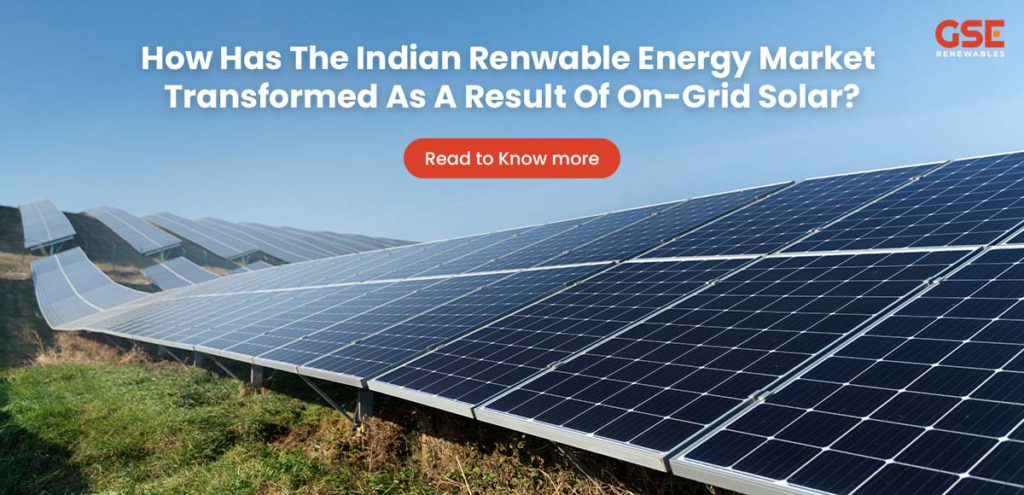500 kW Solar Power Plant Cost in Gujarat: Complete Price & Savings Guide
Nov 26

Many people have shifted to renewable energy solutions as technology has advanced at an ever-increasing rate. In the past 10 years, there have been numerous adopters of wind energy, solar energy, and hydroelectric energy. Why? Because they are more affordable and readily available resources that don’t disrupt the planet’s ecological equilibrium.
India ranks fifth in wind power, fourth in solar power, and fifth in the output of renewable energy, according to the Indian Renewable Energy Industry report.
One of the world’s most desirable markets for renewable energy is India. The main factor influencing economic development, urbanization, industrialization, and societal standards of living is electricity. Since wind and hydroelectric power are unpredictable, solar energy is a more reliable energy source than those two. As a result, the combined use of renewable energy sources is chosen over other non-renewable energy sources.
Three main categories of solar power systems exist:
A solar power generation system that is connected to the utility grid is known as an on-grid solar. This indicates that the grid receives the electricity generated. This system is hassle-free to install, economical to use, and simple to maintain.
How it operates: The solar panels you have put at your property collect solar energy and transform it into direct electricity (DC). The solar converter then transforms this direct current (DC) into alternating current (AC), which is subsequently supplied through a grid for everyday usage and powers the electrical appliances we use in our homes and offices.
Consumers want gadgets and equipment that are convenient and low maintenance in the period of rapid advancement in every field. All solar panels operate according to the same fundamental principles, and on-grid solar is favored for installation in residences, workplaces, and commercial structures.
Solar energy has the potential to prevent carbon footprints in the years to come and assist people in making the transfer to a greener and cleaner future since a growing percentage of consumers are happy to make the switch. We must maximize solar energy’s potential because it is widely available. Although there are many different types of systems implemented globally, on-grid solar power systems are the most popular.
There are many advantages to on-grid solar systems:
Under a net-metering scheme, you are permitted to sell any extra solar energy you produce through a system installed on your property back into the utility grid. You are ultimately paid back for the excess energy that you haven’t used when you export the electricity through net metering. After that, it is offset by the upcoming bills. The amount you can save through net-metering depends on your consumption as well as the capacity of your solar system.
It is imperative to convert to renewable energy sources on a wide scale in order to make the change noticeable and reduce the negative impacts of global warming. It is our duty to leave a better climate, cleaner air, and a more sustainable environment for the next generation. We must take serious measures to reduce our carbon footprints and leave the earth in a better state for our future generations while keeping the current situation in mind.
The amount of solar energy produced in India has greatly increased, going from 2.63 GW in 2014 to 33 GW in December 2019. India ranks fifth in the field of renewable energy and sixth in terms of solar power capacity. Solar energy adoption has significantly increased as a result of the government’s push to raise awareness, run campaigns, and introduce new programmers. India is now the second most alluring market for renewable energy in the world.
In terms of the development of renewable energy, India is a game-changer. Investors assert that the Indian government’s backing has improved the field of renewable energy. India appears to be powered by solar energy, which is what makes the country so brilliant.
Solar energy as a renewable energy has come a long way in sustainable development and in making a safer future. On-grid solar systems allow you to reduce your electricity costs while maintaining total reliance on the grid to power your house or business. GSE Renewables is committed to facilitating investment in Renewable Energy Projects in India that is clean and sustainable to businesses. Your whole solar power demands are taken care of by GSE Renewables.
For more details, contact us today!
Our Blogs With a combined experience of over 250 years and the successful management of 30 MW of solar energy projects, GSER offers the most efficient solutions. 500 kW Solar Power Plant Cost in Gujarat: Complete Price & Savings Guide What is a 500 kW...
Read MoreOur Blogs With a combined experience of over 250 years and the successful management of 30 MW of solar energy projects, GSER offers the most efficient solutions. Why Solar Power Is Booming in Gujarat for Businesses Over the last decade, Gujarat has become one of...
Read MoreOur Blogs With a combined experience of over 250 years and the successful management of 30 MW of solar energy projects, GSER offers the most efficient solutions. Solar Opex Model: For Rooftop Solar with No Upfront Investment What is the OPEX Model in Solar Energy?...
Read More